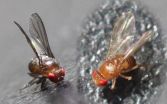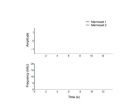(Press-News.org) Recent Massachusetts General Hospital (MGH) investigations into the neurobiology underlying the effects of general anesthesia have begun to reveal the ways different anesthetic agents alter specific aspects of the brain's electrical signals, reflected by EEG (electroencephalogram) signatures. While those studies have provided information that may lead to improved techniques for monitoring the consciousness of patients receiving general anesthesia, until now they have been conducted in relatively young adult patients. Now a series of papers from MGH researchers is detailing the differences in the way common anesthetics affect the brains of older patients and children, findings that could lead to ways of improving monitoring technology and the safety of general anesthesia for such patients.
"Anesthesiologists know well that the management of patients age 60 or older requires different approaches than for younger patients," says Emery Brown, MD, PhD, of the MGH Department of Anesthesia, Critical Care and Pain Medicine. "The doses required to achieve the same anesthetic state in older patients can be as little as half what is needed for younger patients. Explanations for that difference have focused on age-related declines in cardiovascular, respiratory, liver and kidney function, but the primary sites of anesthetic effects are the brain and central nervous system."
Patrick Purdon, PhD, also of the MGH Department of Anesthesia, Critical Care and Pain Medicine, adds, "We know even less about how anesthetic drugs influence brain activity in children, and the current standard of care for assessing the brain state of children under anesthesia calls only for monitoring vital signs like heart rate and blood pressure. This lack of knowledge is especially troubling, given recent studies suggesting an association between early childhood surgery requiring general anesthesia and later cognitive problems."
Brown and Purdon lead an MGH research team investigating the neural mechanisms of general anesthesia that in recent years has identified EEG signatures indicating when patients lose and regain consciousness and the EEG patterns - called oscillations - produced by specific drugs while patients are unconscious. In young adults, anesthesia-induced unconsciousness is associated with medium frequency (around 10 Hz) EEG oscillations called frontal alpha waves that are highly synchronized between the cerebral cortex and thalamus, a pattern that is believed to block communication between those brain structures.
Two papers from the MGH team recently published in the British Journal of Anæsthesia are the first to take a detailed look at anesthesia-induced brain changes in older patients. Purdon and Brown are co-corresponding authors of one study that analyzed detailed EEG recordings of 155 patients aged 18 to 90 receiving either propofol or sevoflurane. That study found that the EEG oscillations of older patients were two to three times smaller than those of younger adults with reduced occurrence of frontal alpha waves. The synchronization between the cortex and thalamus occurred at slightly lower frequencies in older patients, who were more likely than younger patients to experience a state called burst suppression that reflects profoundly deep anesthesia at lower doses. The other BJA study, led by MGH anesthesiologist Ken Solt, MD, found that older animals took two to five times longer than younger animals to recover from equal anesthetic doses and observed similar age-related differences in EEG patterns as seen in the patients.
Another study appearing in the same issue of BJA - co-corresponding authors Purdon and Oluwaseun Akeju, MD, MGH Anesthesia, Critical Care and Pain Medicine - analyzed EEG patterns of 54 patients ranging from infancy through age 28 during anesthesia with sevoflurane. They found that anesthesia-induced EEG signals tripled in power from infancy until around age 6 and then dropped off to the typical young adult level at around age 20. Frontal alpha waves were not observed in children under the age of 1, suggesting that the brain circuits required for cortical/thalamic synchronization had not yet developed. Purdon and Brown were also co-authors of an eLife study led by Boston Children's Hospital investigators Laura Cornelissen, PhD, and Charles Berde, MD, PhD, that detailed the EEG activity of infants 6 months and younger, showing how their patterns evolved toward those more typical of adults over just a few months.
"It appears as though the structure of anesthesia-induced brain dynamics mirrors brain development in children, with different brain wave patterns 'turning on' at ages that coincide with known developmental milestones," says Purdon. "In older patients we see a similar effect but in reverse, with certain brain waves decaying in a manner consistent with brain aging. It's been known that commercially available EEG-based anesthesia monitors were developed for young adults, and while they are limited for that population - reducing brain activity to a single number - they are even more inaccurate for children and the elderly. These studies illustrate why this is the case and suggest a new, age-specific monitoring paradigm that - along with monitors that track a broader range of EEG signals - could help avoid both anesthesia-induced neurotoxicity in children and post-operative delirium and cognitive dysfunction in elderly patients."
Brown adds, "Understanding how the brain's responses to anesthesia change with age allows us to provide personalized, patient-specific strategies for monitoring the brain and dosing the anesthetics, thereby moving us closer to side-effect free anesthesia care."
INFORMATION:
Purdon is an assistant professor of Anæsthesia at Harvard Medical School, and Brown is the Warren M. Zapol Professor of Anæsthesia at HMS and the Taplin Professor of Medical Engineering at MIT. Support for the MGH-led studies includes several grants from the National Institutes of Health and the Foundation of Anesthesia Education and Research.
Massachusetts General Hospital, founded in 1811, is the original and largest teaching hospital of Harvard Medical School. The MGH conducts the largest hospital-based research program in the United States, with an annual research budget of more than $760 million and major research centers in AIDS, cardiovascular research, cancer, computational and integrative biology, cutaneous biology, human genetics, medical imaging, neurodegenerative disorders, regenerative medicine, reproductive biology, systems biology, transplantation biology and photomedicine. In July 2015, MGH returned into the number one spot on the 2015-16 U.S. News & World Report list of "America's Best Hospitals."
You've heard that romance starts in the kitchen and not in the bedroom. Well, researchers at Drexel University finally have the science to support that saying - but not the way you might think.
In a new study published online in the journal Appetite, researchers found that women's brains respond more to romantic cues on a full stomach than an empty one. The study explored brain circuitry in hungry versus satiated states among women who were past-dieters and those who had never dieted.
The study's first author Alice Ely, PhD, completed the research while pursuing a ...
For the first time, Lawrence Livermore scientists as part of an international team, have discovered the most Jupiter-like planet ever seen in a young star system, lending clues to understanding how planets formed around our sun.
Using a new advanced adaptive optics (AO) device on the Gemini Planet Imager (GPI) on the Gemini South Telescope in Chile, the team took an image of the planet, which is about twice the size of Jupiter.
Called 51 Eridani b, the planet is the first in a wave of discoveries by a new generation of planet-hunting instruments, and could help scientists ...
Scientists at The Field Museum have identified a new species of pre-mammal in what is now Zambia. Thanks to a unique groove on the animal's upper jaw, it was dubbed Ichibengops (Itchy-BEN-gops), which combines the local Bemba word for scar (ichibenga), and the common Greek suffix for face (ops). Put simply: Scarface.
Believed to be roughly the size of a dachshund, Ichibengops lived around 255 million years ago, and was a member of Therocephalia, a group of ancient mammal relatives that survived the largest mass extinction in history (the Permian-Triassic extinction). ...
Scientists have been fascinated by a series of unusual exploding stars -- outcasts beyond the typical cozy confines of their galaxies. A new analysis of 13 supernovae -- including archived data from NASA's Hubble Space Telescope -- is helping astronomers explain how some young stars exploded sooner than expected, hurling them to a lonely place far from their host galaxies.
It's a complicated mystery of double-star systems, merging galaxies, and twin black holes that began in 2000 when the first such supernova was discovered, according to study leader Ryan Foley, University ...
New research from North Carolina State University and Reed College shows that when fruit flies are attacked by parasites or bacteria they respond by producing offspring with greater genetic variability. This extra genetic variability may give the offspring an increased chance of survival when faced with the same pathogens. These findings demonstrate that parents may purposefully alter the genotypes of their offspring.
Fruit flies' reproductive cells are usually haploid, meaning that there is only one copy of each chromosome in the cell's nucleus instead of two. During ...
This news release is available in Japanese.
As nonhuman primates mature, their vocalizations are thought to be minimally or not at all influenced by caregivers - but a new study reveals that infant marmosets use cues from adults as they develop vocalizations. In a surprise twist then, humans may not be the only primates whose vocal development benefits from early communication. To monitor and measure the vocal development in marmosets, Daniel Takahashi et al. recorded vocalizations between the first day of birth and two months of age, using four well-established ...
This news release is available in Japanese.
Amid climate change debates revolving around limited increases in recent global mean surface temperature (GMST) rates, Kevin Trenberth argues that natural climate fluxes - larger than commonly appreciated - can overwhelm background warming, making plateaued rates, or hiatuses, deceiving in significance. After many years of monitoring, it's clear that the GMST can vary from year to year, even decade to decade; these differences, Trenberth argues, are largely a result of internal natural variability. For example, the Pacific ...
This news release is available in Japanese.
The recently commissioned Gemini Planet Imager has made its first exoplanet discovery: what may be the lowest-mass exoplanet ever directly imaged with a space telescope instrument. Based on available data, the researchers project the planet weighs twice as much as Jupiter - far less than exoplanets directly imaged before, which weighed at least five times Jupiter's mass. The findings from the next-generation Gemini imaging tool pave the way toward a better understanding of how our solar system was formed. In ...
The Gemini Planet Imager has discovered and photographed its first planet, a methane-enshrouded gas giant much like Jupiter that may hold the key to understanding how large planets form in the swirling accretion disks around stars.
The GPI instrument, which is mounted on the 8-meter Gemini South telescope in Chile, is the size of a small car and was designed, built and optimized for imaging and analyzing the atmospheres of faint Jupiter-like planets next to bright stars, thanks to a device that masks the star's glare.
In December 2104, GPI began searching hundreds of ...
A Jupiter-like planet within a young system that could serve as a decoder ring for understanding how planets formed around our Sun has been discovered by a team of astronomers from the University of Montreal's Institute of Research on Exoplanets (iREx) in collaboration with an international team of astronomers led by professor Bruce MacInstosh from Stanford University. One of the best ways to learn how our solar system evolved is in fact to look to younger star systems in the early stages of development.
The new planet, called 51 Eridani b, is the first exoplanet discovered ...





